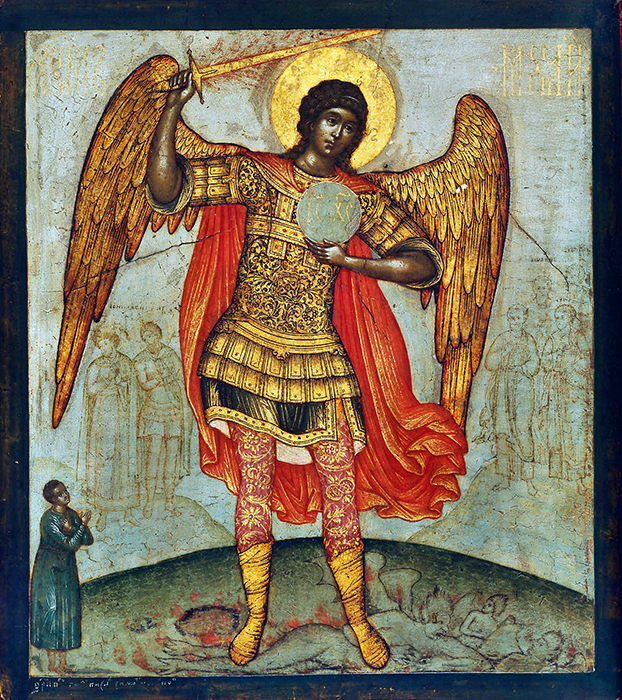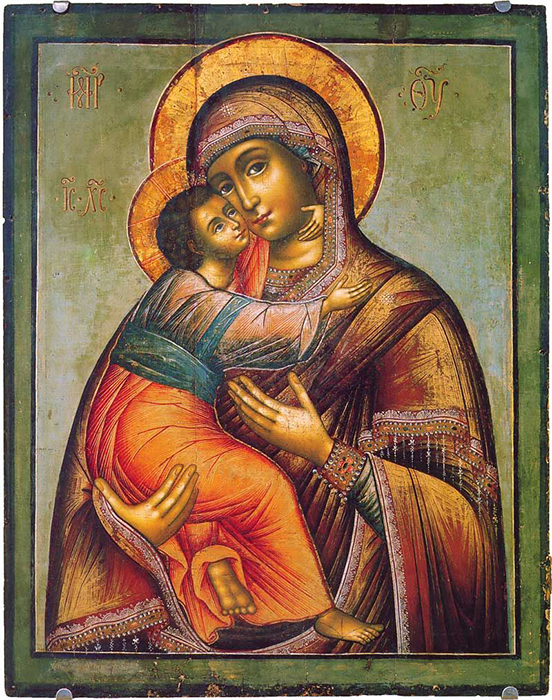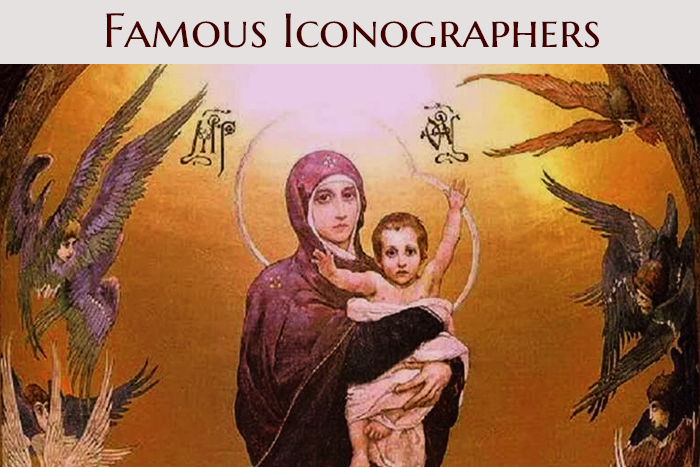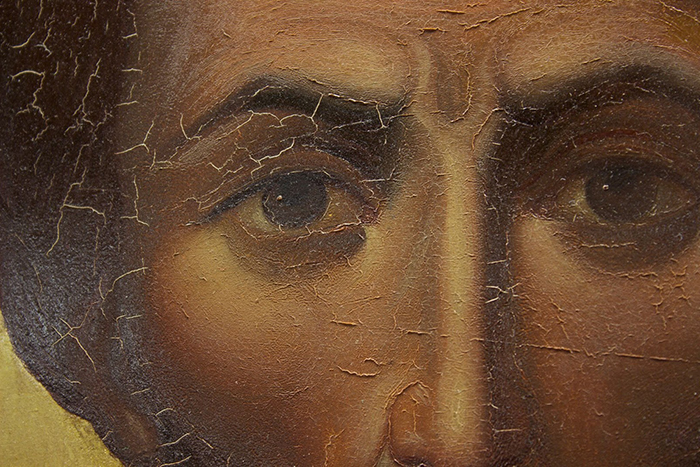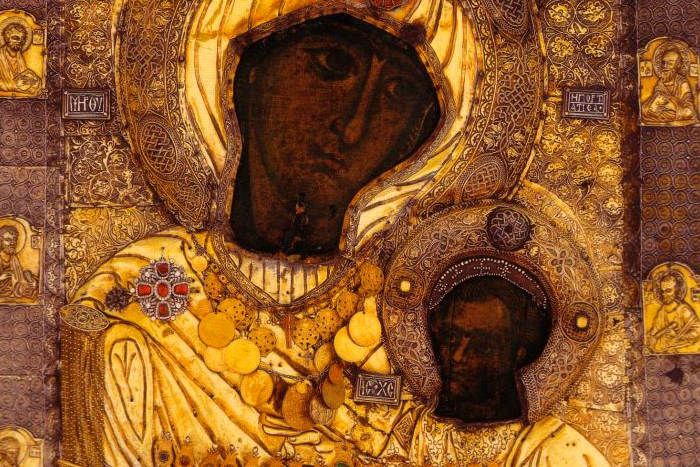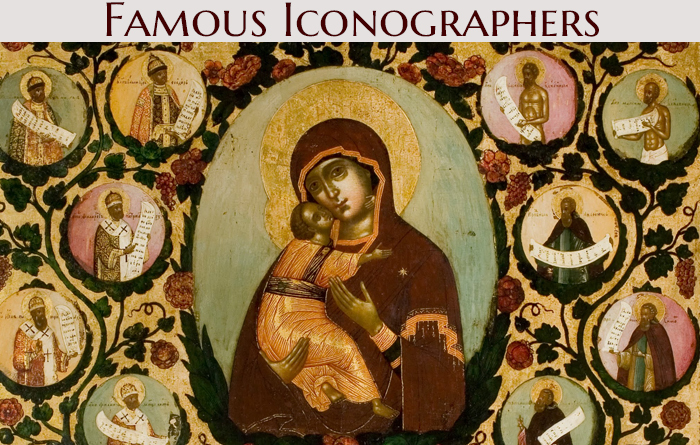
No other icon painter got such contradictory opinions about his work as Simon Ushakov. Did he ruin the iconographic tradition, or was he its defender, aspiring to return to the origins of icon painting by the renovation of the artistic language?
He worked at a difficult time in the history of the Moscow Kingdom: a period of schism, a time when liturgical books and rituals were being reformed, a time of intense debate about the true Orthodox faith, a succession of church councils establishing a new concept of “priesthood” and “power”, numerous military campaigns, and so on. In parallel with the intricate political processes, there was also an ongoing meltdown of the established worldview: a new personal approach to life and the world was emerging through the cracks of the older one. There was an increased demand for science, secular books, and music. Artists showed an acute interest in Western European art.
Fortunately, a large number of documents remain from this time, which helps researchers even to determine the exact dates of the artist’s life (1626-1686) and the chief highlights of his biography. He came from a family of Moscow noblemen, and studied painting since an early age. At 22, he was already promoted to the rank of “royal icon painter”, which was usually conferred on experienced professionals. He was hired by the Armory – a kind of Academy of Arts of that time – as a banner painter, or draftsman. He had a talent for creating subtle, expressive drawings and various ornamental motifs, and for this reason he was commissioned to create plans and maps, sketches of church needlework, jewelry, church utensils, etc.
Of course, the icon remained the main focus of his artistic activity.
The earliest surviving icon by Simon Ushakov is the Vladimir Icon of the Mother of God for the Church of the Archangel Michael in Moscow. That is the first time when Simon Ushakov, while painting the faces, makes attempts to render them three-dimensional. Initially, he attempts to do so by means of contrast, which is later hinted by gradual illumination by applying small transparent strokes in which the previous layers shine through, thus allowing soft and smooth rendering of the volume. Hence the name of this method of painting – “floating technique”, which will later be used and developed in secular painting and is known as staining. The desire for the image to look more realistic was not in order to expose the sacred art to humiliation, nor to bring it down to earth, but to make the holy images closer to man, and, at the same time, to bring man closer to them.
Simon Ushakov painted the Kikkos icon of the Mother of God in 1668 for the Church of St. Gregory of Neocaesarea in Moscow. The very face of the Mother of God on this icon is the artist’s attempt to convey a sense of the physicality of the image. The eyes of the Virgin and the Infant are spherical and three-dimensional, which creates a feeling of liveliness. Ushakov also interprets the image of the Mother of God itself based on its name “Merciful”: he creates the image of the loving, merciful Mother, i. e., he conveys the feelings of the Mother of God. The icon has light, festive colors, designed around a combination of light pink, green, and yellow shades with many non-repeating ornaments on the Mother of God’s attire, which are portrayed with breaks in the folds, which lends more authenticity to the image.
While in the Armory, Simon Ushakov creates an iconographic school, and writes one of the first ever works on the theory of painting – a treatise Word to Those Who Love Icon Painting, which encourages all artists to focus on “praising God” with their paintings, as well as to paint realistic icons that are true to life.
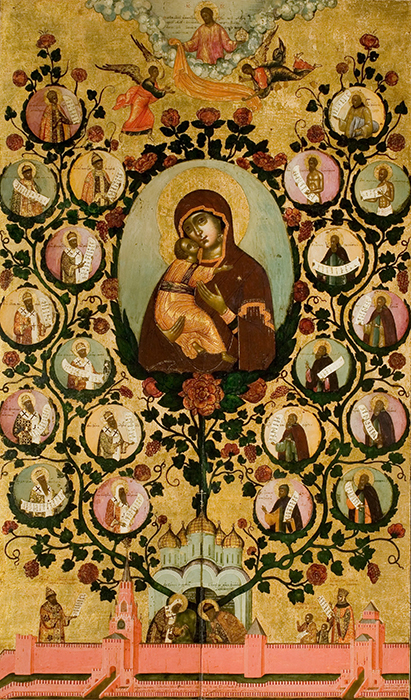
The free combination of tradition and innovation was reflected in one of the most famous works of the artist The Tree of the State of Moscow (1663), in which Simon Ushakov acted as an excellent artist and the creator of a new iconographic style filled with ideas that testify to his deep understanding of his time. He introduces a new idea into icon painting, namely the idea of a symphony between the Church and state. The Vladimir Icon of the Mother of God, the main Russian icon, is at the center of the entire composition; images of Russian saints who in one way or another contributed to the consolidation of the Moscow state are to the right and left of it in medallions. The medallions are located on the branches of the tree that grows through the Assumption Cathedral, i. e. through the Church, which symbolizes the foundation of the Moscow Kingdom. The icon also depicts the royal family – Tsar Alexei Mikhailovich and the Queen with the Tsareviches. All of them hold unfolded scrolls with excerpts from various akathists devoted to the Mother of God written on them. Hence another title of this piece, Praise to the Vladimir Icon of the Mother of God.
Simon Ushakov, contrary to tradition, almost always signed his works and marked the dates of their creation, thus assuming full responsibility for his innovations. He created more than fifty icons in his lifetime. These are now considered to be masterpieces of art. He had a huge impact on the development of painting and icon painting, becoming a connecting link between the past and the future of Russian art.
